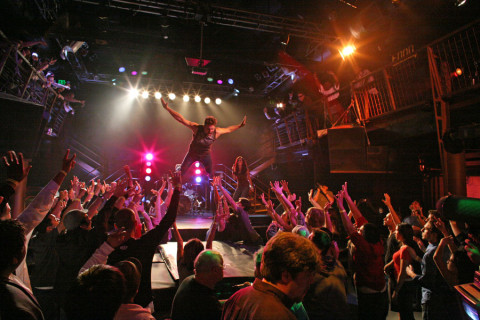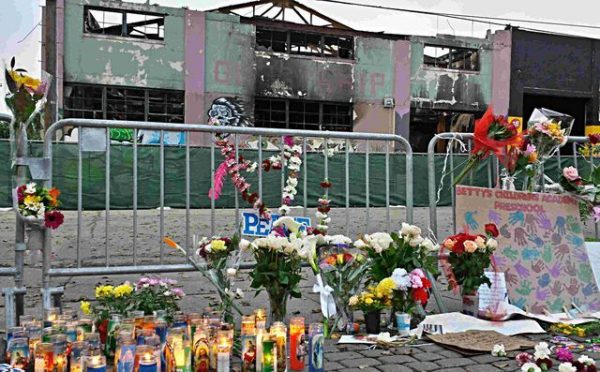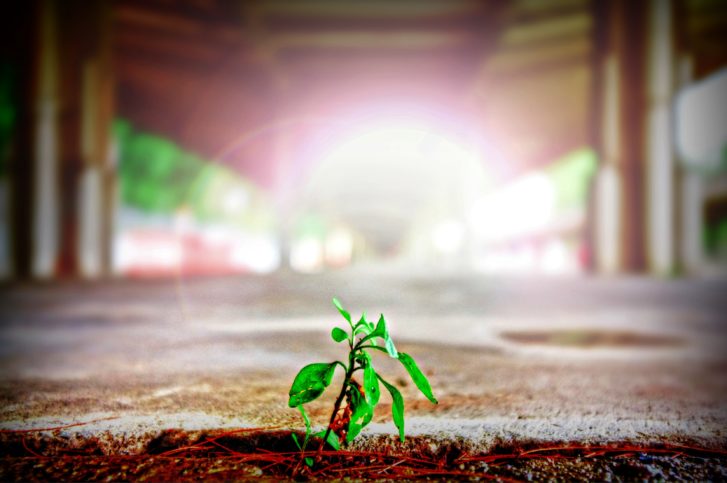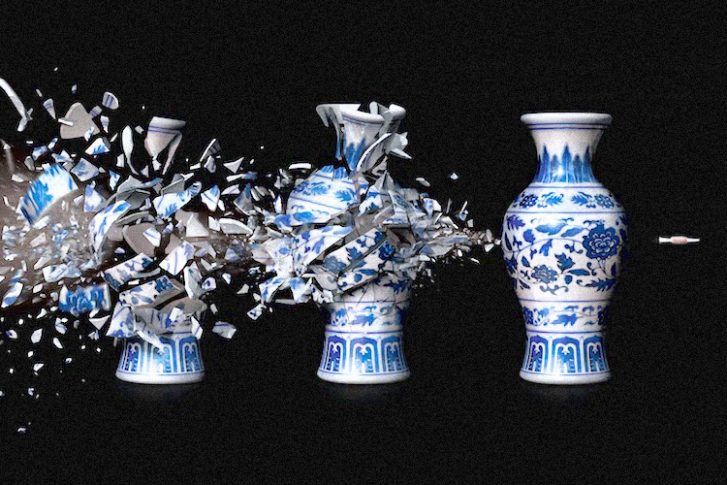Written by Colin E. Davis
Western popular culture has always had a discordant relationship to its shadow twin in the “underground” arts. Whether it be punk, industrial or heavy metal music, horror movie culture or the many sexually diverse forms of artistic expression, each is relegated to so-called underground status and generally dishonored by the “mainstream” culture.
When I use the term underground arts, I am not speaking of the expressions of all creative but financially unsuccessful artists who struggle to survive in cities all over the world. I am referring to a specific sub-cultural ecosystem that is inspired by personal and collective darkness, and uses music and art of all kinds to transmute that human energy through creative expression.
In psychological terms the creation of dark art could be seen as a form of “shadow work”. The shadow is a psychological term that describes all of our socially deplorable thoughts, feelings and impulses that we would like to deny existence within us. We usually repress our ancient animal violence, sexual drives and other culturally deprecated tendencies. We project them onto others and we unconsciously or consciously displace these energies – sometimes in healthy ways such as through art, dancing healthy sex, or sports. But if not, they lead us towards personal and cultural disease of every kind. Our increasing cultural chaos as a society is largely a result of our inability to come to terms with our shadows or to find healthy expressions for our lower nature. Underground arts are an existing mechanism to do just that and in this author’s opinion, should be cherished and supported.
Many people just do not understand the spiritual necessity of the arts including the darker forms which have been with us as long as we know. The underground arts, their artist creators and the venues that support them often survive on the edge of extinction. Even cities like San Francisco, once the model for prolific artistic diversity are slowly but surely losing the arts. This is not usually a conscious decision. In San Francisco’s case it’s largely a consequence of the city’s inability to mitigate the economic disparity between the incoming wealthy tech residents and the long standing artist culture. The cost of living in cities like San Francisco and New York, which have always been deep well-springs of artistry is becoming far too high to support their artists who generally do not focus on traditional careers or personal wealth generation.
At this very moment, in San Francisco, the DNA Lounge, a night club that has been a mainstay for underground music since 1999 is on the verge of bankruptcy. The DNA is a unique venue because of the wide diversity of types of artists it supports. It’s mainly a night club for live bands and DJs, but also features art shows, flea markets, fashion and burlesque shows and live speaking performances. Artists and musicians that tend to focus on the dark side are welcomed there.
The club’s owner Jamie Zawinski opened the venue with money he made in the early booming years of the Internet, and has been continually dumping his own money into the club, until now. He’s almost out. I have been to may shows at DNA and I feel the same as so many others do – that DNA is a treasure that should not be allowed to close.

San Francisco’s DNA Lounge
When I consider the American attitude towards the arts, especially darker arts, I think of my own experience as a musician who toured Europe and played at many smaller music venues. My first European tour was in 2003 and the contrast I experienced was literally shocking. Countries which have a similar states of economic well being as the U.S., such as Germany, Holland, Switzerland, Austria, France and Scandinavian countries support the arts and music venues through subsidies. Taxpayers collectively chip in to honor the creative genius of musical artists and in turn greatly benefit themselves as concert goers.
Not all, but a great many small and medium sized night clubs in these European countries are better off in terms of building quality, equipment and professional staff. Many American concert venues just cannot afford to install high quality sound and lighting systems, nor can they afford professional stage managers, lighting and sound engineers. They make do with what they can afford and they often have to rent real estate in the most dilapidated areas of cities to afford the cost of the rent. The difference in the experience for both musicians and fans in drastic. It’s well known to musicians that play smaller venues that European tours are far preferred to American tours for this reason. But it doesn’t have to be this way.
Admittedly, there are other factors that play into the scenario and make European music scenes generally healthier. In most countries in Europe the drinking age is under 18, and because of this, clubs have a larger potential customer base than they do in the U.S. where the drinking age is 21. Clubs also utilize high school students as staff who intern at the clubs, learning skills, some building a career in the music industry as a consequence. There is simply a more symbiotic relationship between musical artists and the community in many European countries than there is in America.
When art and music is not consciously honored such as in these ways, it shoves the less commercially viable art forms deeper into the underground where conditions are truly dangerous. Another Bay Area case comes to mind. A converted warehouse called the Ghost Ship which served as a concert venue and residence for underground artists burned down on December 2nd 2016, killing over 30 people. The building’s interior was constructed far outside of fire and safety codes and according to some, was a “death trap” and an accident waiting to happen. Just like the shadow of our own psyches, what you put into the underground becomes a powerfully destructive force.

The Oakland Ghost Ship underground artist residence and venue
We as a culture do not quite recognize it yet, but artists and the venues that support them are to a great degree in the business of healing, not just entertainment or self-expression. Many professional musicians know this.
“The thing that bugs me a lot is when people say “now that you’re sober or matured and now that you’ve worked out all your demons”, your music is gonna be all soft and flowery. I’ll tell you though, if I could have exorcized all those demons I would have. But it’s something you embrace. It’s a part of me and I get to celebrate it in my music. I get to communicate it. I get to use it as a therapy to help my own insanity, and other people do too. So when you get those like-minded people together in a place and play live, music does something to people. I get to watch people in front of me transform”.
—James Hetfield, singer-guitarist for Metallica in an interview with Joe Rogan
What if we came to understand that the mental and spiritual health of our culture was totally dependent on the artists and their micro communities all around us? What can we do to actively work with them symbiotically benefiting everyone in the process?
Artists of all kinds could work directly with city counsels to beautify and culturally deepen their communities in exchange for rent and tax subsidies. Local currencies or credit clearing circles are another benefit for artists. They not only keep economic liquidity inside of communities but they subsidize artists who are typically low on Federal Reserve Notes. Its not that we cant do this, it’s a question of priorities. How much do Americans really value the arts? If the economy keeps going in this direction, we may soon find out.
Originally posted @ We Are Change









